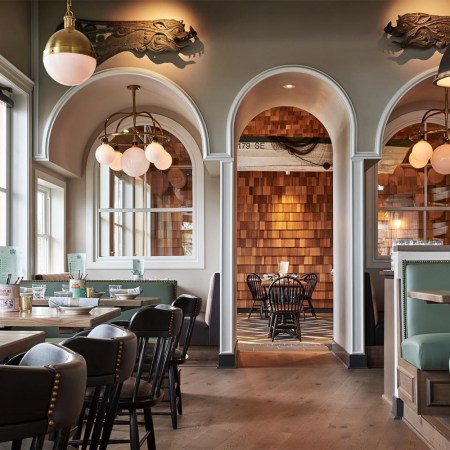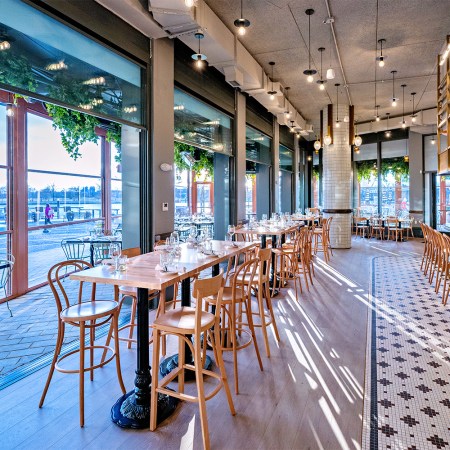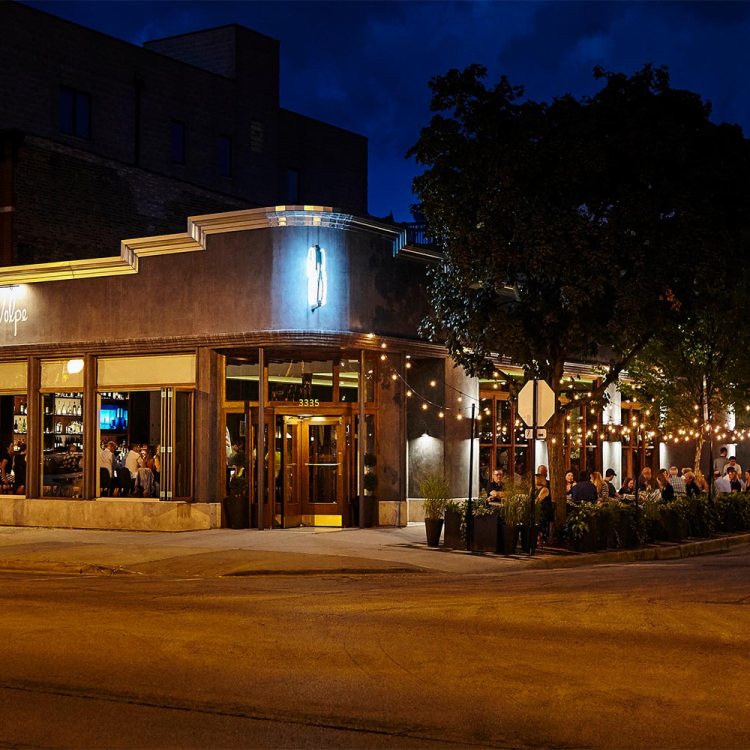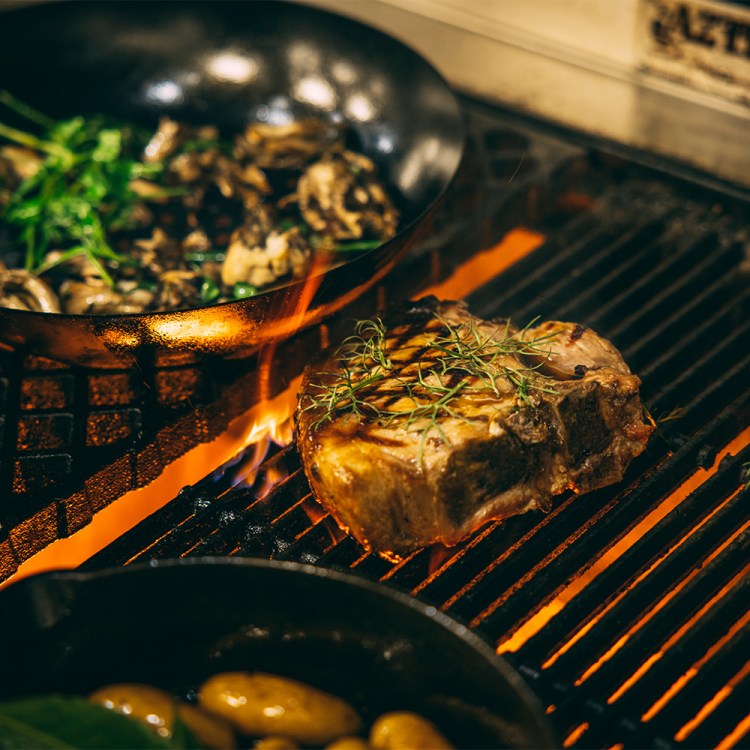When it comes to French food, we thought we’d seen it all. In fact, after years of seeming all but synonymous with fine dining, French restaurants have begun to feel a little … passé. But chef Rob Shaner has still found a way to make French food taste brand new: by going back in time to his own adolescence.
In 1994, Shaner’s father was transferred to Paris for work, and the already adventurous teenager set himself a challenge: any time he saw an item on a menu he didn’t recognize, he had to order it.
“It served me pretty well in being exposed to all sorts of French foods very quickly,” he says, noting that according to the rules of his own design, nothing was off-limits, from game to offal and more. While not everything he sampled was to his liking at first — kidneys were notably tough to embrace — to hear Shaner tell it, “that was the beauty of it.”
“I was in a country where the people knew more about food than I did,” he says. “And so if I didn’t like it, the onus was on me to figure out why.”
In Paris, Shaner’s family soon found their so-called cantine, or regular haunt: a neighborhood restaurant called Monsieur Lapin. It was here, Shaner says, that he discovered a core element of French cuisine, which he would honor throughout his career: a simple but authentic approach to hospitality.
“It felt like a family reunion every time I came back to the restaurant,” he recalls. “And that was brand new for me.”

It wasn’t just about the food, he says, but the uniquely French blend of reverence, conviviality and simplicity associated with mealtime.
“You would end up spending three hours out at dinner,” he says. “That meant I got to know my family better, my friends better. That was really what started the romance for me, with dining.”
Today, in Chicago’s North Center, Shaner’s Robert et Fils is inspired by his French culinary experiences in more ways than one. Its name, which translates to Robert and Son, evokes his late father, the man who set the wheels in motion for Shaner’s love of France. His menu, meanwhile, features many of the French classics the chef so loves, from mussels marinière to skate with brown butter sauce to a simple ham and butter sandwich. But it also offers plays on dishes that are lesser known, at least by American standards: Hare à la royale is a tongue-in-cheek nod to Monsieur Lapin (a.k.a. Mr. Rabbit), while red carrots and fermented green strawberry gastrique season one of Shaner’s favorite French offal offerings: veal sweetbreads.
These and other dishes may seem unfamiliar even to those well versed in French cuisine, but for Shaner, that’s part of the fun.
“The one problem I always had in France with food — it’s what makes it beautiful, but it’s also what makes it rigid — was tradition, tradition, tradition,” he says. His break with it, however, should not be seen as American pretension or culinary blasphemy; in fact, it’s an echo of what’s already happening back in Paris, where creativity, innovation and a flair for fusion flavors have defined the bistronomy movement since it emerged in the ’90s, care of chefs like Yves Camdeborde and Eric Fréchon. These days, a diverse range of French chefs informed by their travels (not to mention émigrés hailing from Mexico, China, Japan and beyond) add their own flavors and touches to the modern French fare found throughout the capital and beyond.
“In some ways, I never thought I would see dining, French dining, diversify the way that it has,” says Shaner.

In Chicago, Shaner wholeheartedly embraces this international approach. His menu may feature kombu-cured mackerel, tomatoes with wakame and trout roe, or kidneys smoked with Japanese cedar paper and topped with a sherry and mustard sauce. His offerings change daily — or sometimes even hourly. Indeed, Shaner has been known to add new dishes just hours before service, a quirk that was not part of his original plan. As with many restaurateurs, Shaner’s ambitions for Robert et Fils were slightly foiled by several months of lockdowns, and after scrapping his fine dining menu in favor of a takeout window, Shaner is finally forging forward with the food he envisaged, albeit with a far smaller team than planned. It’s an obstacle he chose to see as a challenge, and one he rose to with pleasure.
“I think most chefs get bored after they’ve pieced a dish together in their head and they’ve finally put it on the menu,” he says, of his extreme approach to menu variability. “It was born out of necessity, but it’s also a lot of fun, because it means that as soon as I’m bored with a dish, I get to try a new one.”
Of course, it’s not just Shaner’s whims that dictate the ever-changing menu. His reliance on local ingredients marries the French ethos of terroir with Midwestern bounty, from local produce to freshwater fish. In order to reduce waste — and make the most of phenomenal products grown nearby — Shaner and his team often use the same bases in the kitchen, cocktails and pastries. Fermentation and upcycling are a part of their day-to-day, and as such, the same tomatoes appearing as an appetizer may lend their flavors to a tomato water for a cocktail; a fermented honey could feature from appetizer all the way through to dessert.
The result is a keen marriage of American innovation with just the right amount of French reverence for tradition. It’s the perfect recipe for making French food taste wholly novel — and, perhaps, more authentic to itself than ever before.
This article was featured in the InsideHook Chicago newsletter. Sign up now for more from the Windy City.






















